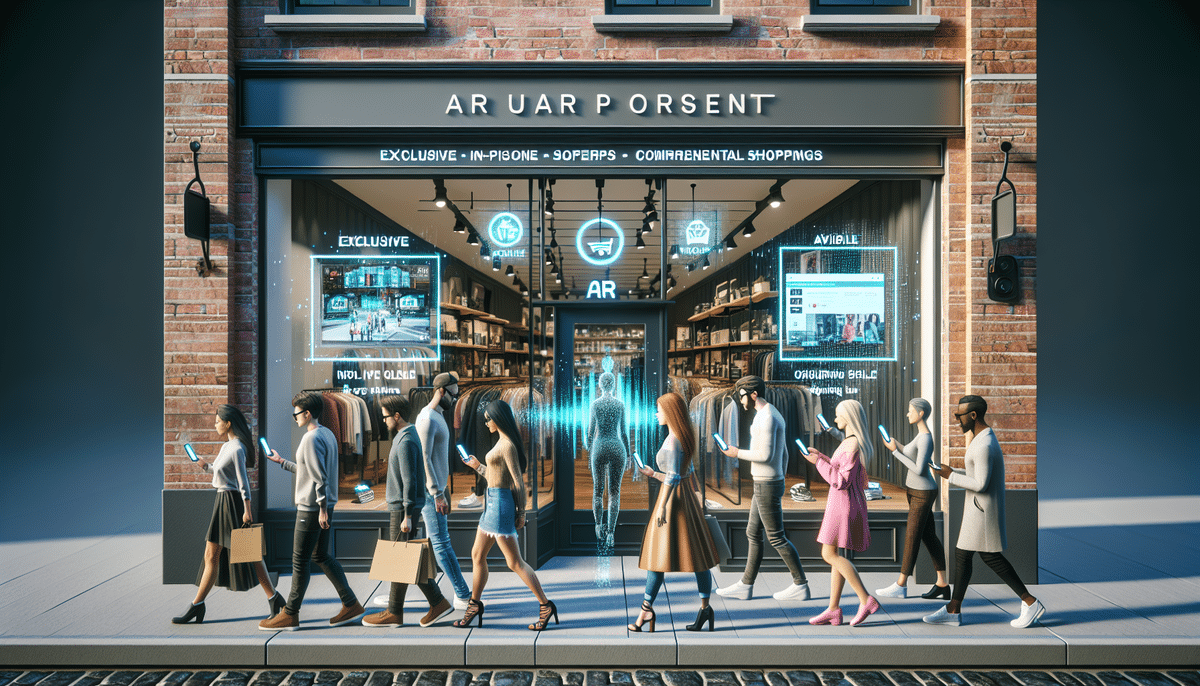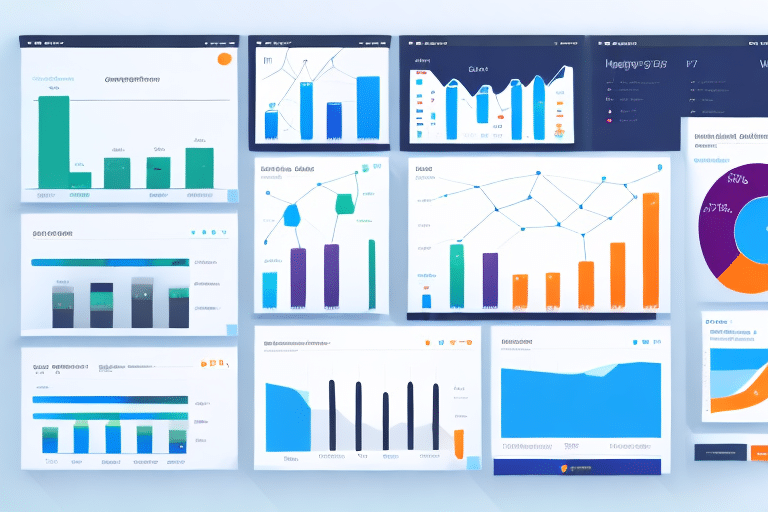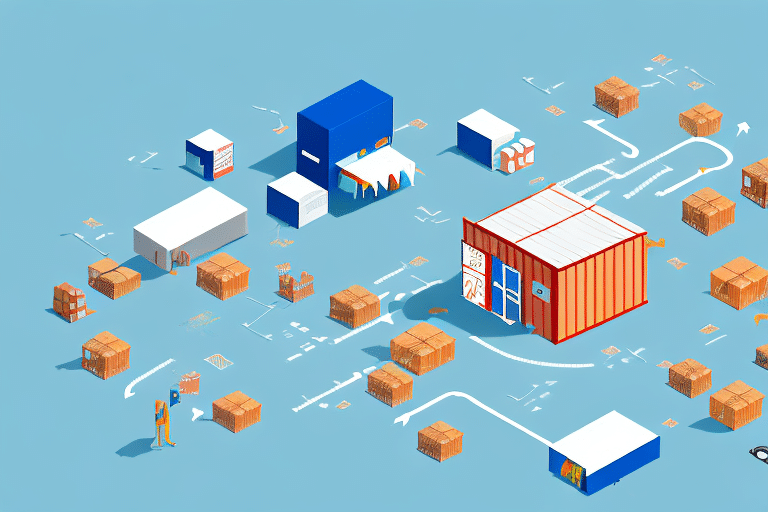How Brick-and-Mortar Retailers Can Leverage Online Strategies to Increase Revenue
In today's highly digital marketplace, brick-and-mortar retailers face significant challenges in driving revenue and staying ahead of the competition. While foot traffic and in-store sales remain crucial elements of any retail strategy, it has become essential for retailers to embrace online strategies to enhance their revenue streams. This article examines how brick-and-mortar retailers can leverage online strategies to increase revenue.
Why Online Strategies are Essential for Brick-and-Mortar Retailers
The rise of e-commerce has fundamentally transformed the retail industry, with global online sales projected to reach $6.54 trillion by 2023 (Statista, 2023). Consumers now expect to engage with retailers across multiple channels, including online, mobile, and in-store. This shift in consumer behavior makes it critical for brick-and-mortar retailers to adopt online strategies to remain competitive.
Online strategies such as e-commerce websites, social media, email marketing, and mobile optimization have become essential tools for retailers to reach customers where they are most active while also offering new revenue streams. By adopting these strategies, brick-and-mortar retailers can create an omnichannel presence that drives sales both in-store and online, while optimizing the overall customer experience.
Understanding the Benefits of Combining Brick-and-Mortar and Online Retailing
Brick-and-mortar retailers can leverage online strategies to create a more seamless omnichannel shopping experience for their customers. Services such as click-and-collect, ship-from-store, and online returns in-store connect digital and physical channels, allowing customers to shop in their preferred manner.
By integrating online and offline channels, retailers can capture more data on customer preferences and behavior. This information can be used to provide personalized experiences both online and in-store, driving loyalty and repeat sales. According to a McKinsey report, personalization can increase conversion rates by up to 15%.
Another benefit of combining brick-and-mortar and online retailing is the ability to reach a wider audience. An online presence allows retailers to attract customers who may not have access to their physical stores, whether due to location or mobility issues. Additionally, online channels enable retailers to expand their reach beyond their local market and even internationally, opening up new opportunities for growth and revenue.
Top Online Strategies Retailers Should Implement to Increase Revenue
There are numerous online strategies retailers can implement to increase revenue, some of the most effective include:
- E-commerce Websites: Launching an e-commerce website allows retailers to expand their reach globally, attract new customers, and drive revenue. An e-commerce website should provide an easy and enjoyable shopping experience that reflects the brand's style and values. Shopify reports that e-commerce sales have grown consistently, highlighting the importance of a robust online storefront.
- Social Media: Engaging with customers through social media can build brand awareness and drive sales. Posting visually engaging content, offering exclusive promotions, and collaborating with influencers can help retailers create a loyal following. Platforms like Instagram and Facebook are pivotal, with over 3.6 billion users worldwide (Statista, 2023).
- Email Marketing: Retailers can use email marketing to promote new products, sales, and events. By segmenting their audience based on preferences and behaviors, retailers can deliver personalized messages that drive engagement and sales. Studies show that for every $1 spent on email marketing, the average return is $42 (DMA, 2023).
- Mobile Optimization: Optimizing websites and apps for mobile devices is essential as more consumers shop on their smartphones. A seamless mobile experience can increase engagement and revenue, and improve customer loyalty. Mobile commerce is expected to account for 72.9% of total e-commerce sales by 2023 (eMarketer).
Another effective online strategy is content marketing. By creating high-quality, informative content relevant to their target audience, retailers can establish themselves as industry experts and build trust with potential customers. This can lead to increased website traffic, higher search engine rankings, and ultimately, more sales.
Additionally, retargeting is a powerful online strategy that can help retailers increase revenue. By using cookies to track website visitors, retailers can display targeted ads to those who have already shown interest in their products. This keeps the brand top-of-mind and encourages customers to return to the website and make a purchase.
How to Create a Seamless Omnichannel Experience for Customers
Creating a seamless omnichannel experience requires retailers to leverage technology to connect and optimize their different channels. Retailers should focus on providing a consistent brand experience across all channels and using data to personalize the customer journey.
To create a seamless omnichannel experience, retailers can utilize tools such as:
- Inventory Management Systems: These systems enable retailers to manage inventory and fulfill orders from multiple channels effectively. They ensure product availability across all channels, reducing the risk of stockouts and lost sales.
- Unified Customer Data: Collecting and maintaining unified customer data ensures a personalized, consistent experience. By tracking customers across different channels, retailers can deliver personalized recommendations and experiences.
- Point-of-Sale Systems: Modern POS systems can integrate with various channels, including online, in-store, and mobile devices. Integration improves inventory management, streamlines sales processes, and provides a more personalized shopping experience.
Another important tool is a responsive website design. With more customers using mobile devices to shop, retailers need to ensure their website is optimized for mobile. A responsive design adapts to the screen size of the device being used, providing a consistent and user-friendly experience across all devices. This can lead to increased engagement and sales, as customers are more likely to make a purchase if the website is easy to use and navigate.
The Importance of Building a Strong Online Presence for Brick-and-Mortar Retailers
Building a strong online presence is essential for brick-and-mortar retailers to attract and retain customers. Online channels provide opportunities to drive sales, build brand awareness, and engage with customers where they prefer to shop. According to a Forbes article, businesses with a strong online presence are 50% more likely to grow their revenue.
Creating a strong online presence involves crafting a brand's image across all digital channels, maintaining these channels regularly, and developing compelling content that aligns with the brand's mission and values.
One key benefit is the ability to reach a wider audience. With the rise of e-commerce, consumers increasingly turn to online channels to make purchases. Establishing a strong online presence allows brick-and-mortar retailers to tap into this growing market and expand their customer base beyond their physical location.
Additionally, a strong online presence enables retailers to gather valuable data and insights about customers. By tracking customer behavior and preferences across digital channels, retailers can gain a deeper understanding of their target audience and tailor their marketing efforts accordingly. This data can also improve the in-store experience by identifying areas where customers may need additional support.
How to Use Social Media to Boost Your In-Store Sales
Social media is an effective tool for retailers to drive in-store sales. By leveraging social platforms, retailers can create buzz around sales events, announce new products, and drive traffic to their stores through exclusive promotions.
One effective technique is geo-targeting, which allows retailers to offer personalized, location-specific content to customers based on their location. In-store promotions promoted on social media can drive foot traffic, and social media interactions provide valuable feedback that can be used to enhance in-store experiences.
Another strategy is creating engaging content that encourages customers to visit physical stores. This can include behind-the-scenes glimpses of the store, sneak peeks of new products, and interactive posts that invite customers to share their own in-store experiences.
By establishing a strong social media presence, retailers can build a loyal following of customers eager to visit their stores and take advantage of exclusive promotions and events. Additionally, highlighting unique store features, such as knowledgeable staff or a commitment to sustainability, can differentiate a retailer from competitors and attract new customers.
Implementing an Effective Email Marketing Campaign for Brick-and-Mortar Retailers
Email marketing is an effective way for brick-and-mortar retailers to drive revenue by reaching customers who have already shown interest in the brand. By segmenting email lists based on customer preferences and behaviors, retailers can deliver personalized messages that resonate and drive engagement.
Key elements of successful email marketing include developing compelling subject lines, keeping content concise and engaging, promoting offers and promotions, and including high-quality product images. According to the HubSpot, personalized emails can deliver 6 times higher transaction rates.
Furthermore, retailers should regularly analyze and optimize their email campaigns by tracking open and click-through rates, testing different subject lines and content formats, and adjusting the frequency of emails to find the optimal balance between staying top-of-mind and avoiding overwhelming customers.
The Impact of Mobile Optimization on Brick-and-Mortar Sales
Mobile optimization significantly impacts brick-and-mortar sales. According to a study by Google, nearly 30% of shoppers used mobile devices to find in-store products in 2023. Moreover, mobile commerce is expected to account for approximately 72.9% of total e-commerce sales by the end of the year (eMarketer).
By optimizing mobile experiences, retailers can provide shoppers with personalized offers and recommendations in real-time, enhancing the overall shopping experience and driving revenue. Retailers should ensure their websites and apps are mobile-friendly, include location-based content, and offer seamless cart and checkout experiences to maximize sales.
Additionally, mobile optimization helps retailers track customer behavior and preferences. Analyzing data from mobile interactions provides insights into popular products and services, enabling retailers to adjust their marketing strategies accordingly. This leads to increased customer loyalty and repeat business.
Navigating the Challenges of Integrating Online Strategies into Brick-and-Mortar Stores
Integrating online strategies into brick-and-mortar stores presents several challenges for retailers, but these can be overcome with a comprehensive strategy that aligns all sales channels.
Retailers should consider the following when integrating online strategies:
- Training Employees: Employees should be trained to interact effectively with customers both online and in-store, ensuring a consistent experience across all sales channels.
- Investing in Technology: Investing in technology that seamlessly integrates online and offline channels, such as inventory management systems and unified customer data sources, is crucial.
- Optimizing Store Layouts: Store layouts should accommodate online fulfillment processes, ensuring seamless integration with online channels without compromising in-store experiences.
Another challenge is managing inventory across multiple channels. Accurate real-time inventory tracking is essential to avoid stockouts or overstocking. Retailers must implement robust inventory management systems to maintain balance.
Additionally, handling online returns in-store can create logistical challenges. Retailers should develop clear policies for processing online returns in physical stores and ensure employees are trained to handle these situations efficiently.
Conclusion
Online strategies are essential for brick-and-mortar retailers to increase revenue and remain competitive in today's digital marketplace. By creating a seamless omnichannel experience that connects all sales channels and leveraging technologies such as e-commerce websites, social media, email marketing, and mobile optimization, retailers can drive sales and enhance the overall customer experience. Overcoming challenges associated with integrating online strategies requires careful planning and investment, but the benefits can drive long-term success for brick-and-mortar retailers.




















